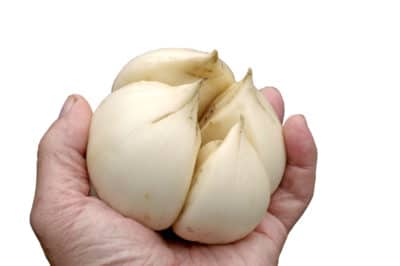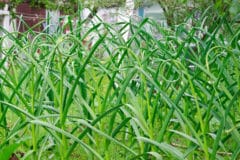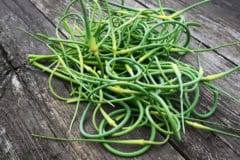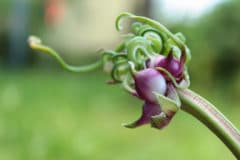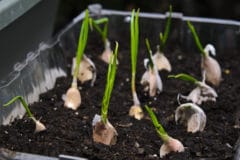Why “Elephant” Garlic?
The plant we know as elephant garlic apparently came to the US with Czechoslovakian or Yugoslavian immigrants. Although sometimes called “French Garlic,” there is nothing to support that it originated in France. Nor was it created by Luther Burbank, as some stories suggest. Nichols Garden Nursery was apparently the first to call it elephant garlic – prior to that the most common name was giant garlic.
Regular vs. Elephant Garlic
Here’s how elephant garlic differs from regular garlic:
- Elephant garlic only comes in one variety.
- Small cloves can be planted and allowed to winter over to produce a single large clove.
- Elephant garlic can be left in the ground for several years.
Growing Elephant Garlic
Like its namesake, elephant garlic prefers high soil fertility and good drainage. Grow a cover crop and work it into the soil the season prior to planting. Add lots of well-rotted leaf mold, aged manure or compost to build humus and fertility. Since elephant garlic is fall-planted, you must pay particular attention to drainage during the winter months to prevent standing water.
How to Plant Elephant Garlic
Elephant garlic typically has four to six large cloves. Separate the cloves and make sure they are planted with the pointed end facing up. Cloves should be planted in the fall, four to six inches deep. If you live where winters are cold, add an additional four to six inches of mulch or straw on top of the planted cloves. Space cloves about eight inches apart.
Harvesting Elephant Garlic
Like hardneck garlic, elephant garlic sends up a seed stalk (scapes) in late spring. These scapes must be cut off as soon as the flower buds show, in order to promote clove development. The scapes can be eaten fresh, frozen, pickled or dried. Once most of the leaf stalks have dried to yellow and start to turn brown, pull or dig the elephant garlic bulbs.
Curing Elephant Garlic
To promote better storage and prevent rot, elephant garlic must be cured after harvest. Immediately cut off the stalks and trim the roots. Dry the garlic in a warm place with good air circulation, out of direct sun. In most climates, elephant garlic will take two to three weeks to cure. In humid areas, you may need to move the cloves indoors and use a fan.
